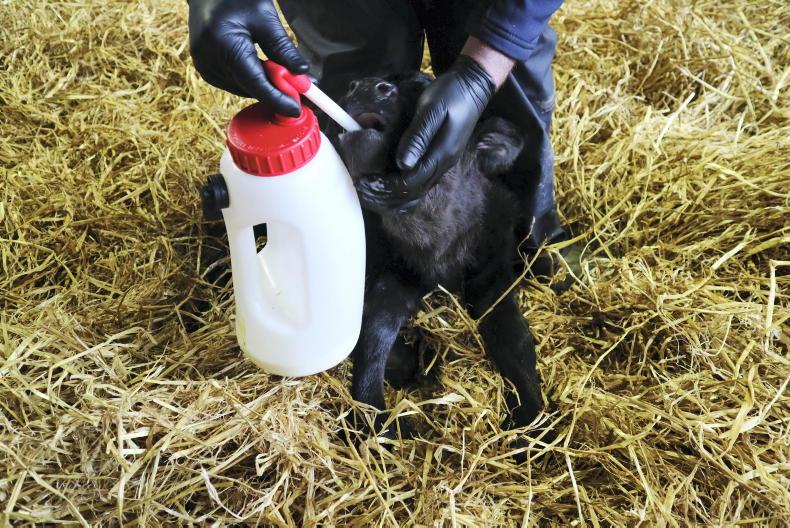Every now and then, a calf will be unable to feed on its own and will require assistance. When it comes to the first and second feeds, the aim should be to get as much colostrum into the calf as possible.
Ideally, the calf’s mother can be locked in a head gate and milked. This is then fed direct to the calf.
But if the cow has calved before her due date, experienced trauma during calving or is generally lacking milk, the calf will need colostrum from another cow or a powdered substitute.
Milking the cow
Colostrum should be milked from early-calving cows or those with a good supply of milk just after they calve down. This colostrum should then be frozen and used as required.
Only milk a cow that can be securely restrained. Use a clean, sterile container to collect colostrum. Do not use a bucket set on the ground, as the cow will often kick it over.
Freezing colostrum
Once you have collected a good sample, transfer it to a zip-lock freezer bag for storing.
This means the colostrum will be laid out in a thin layer with a larger surface area, making it easier and faster to defrost when required. Storing colostrum in a bottle or jar is fine, but it will take longer to defrost.
Thawing
When thawing out colostrum, use lukewarm to moderately warm water. Boiling water will denature the protein in colostrum, lowering the feed value of the milk.
Read more
UK sheepmeat production up 9% in January
IFA to protest Dunnes Stores in Cork and Monaghan
Every now and then, a calf will be unable to feed on its own and will require assistance. When it comes to the first and second feeds, the aim should be to get as much colostrum into the calf as possible.
Ideally, the calf’s mother can be locked in a head gate and milked. This is then fed direct to the calf.
But if the cow has calved before her due date, experienced trauma during calving or is generally lacking milk, the calf will need colostrum from another cow or a powdered substitute.
Milking the cow
Colostrum should be milked from early-calving cows or those with a good supply of milk just after they calve down. This colostrum should then be frozen and used as required.
Only milk a cow that can be securely restrained. Use a clean, sterile container to collect colostrum. Do not use a bucket set on the ground, as the cow will often kick it over.
Freezing colostrum
Once you have collected a good sample, transfer it to a zip-lock freezer bag for storing.
This means the colostrum will be laid out in a thin layer with a larger surface area, making it easier and faster to defrost when required. Storing colostrum in a bottle or jar is fine, but it will take longer to defrost.
Thawing
When thawing out colostrum, use lukewarm to moderately warm water. Boiling water will denature the protein in colostrum, lowering the feed value of the milk.
Read more
UK sheepmeat production up 9% in January
IFA to protest Dunnes Stores in Cork and Monaghan






 This is a subscriber-only article
This is a subscriber-only article









SHARING OPTIONS: